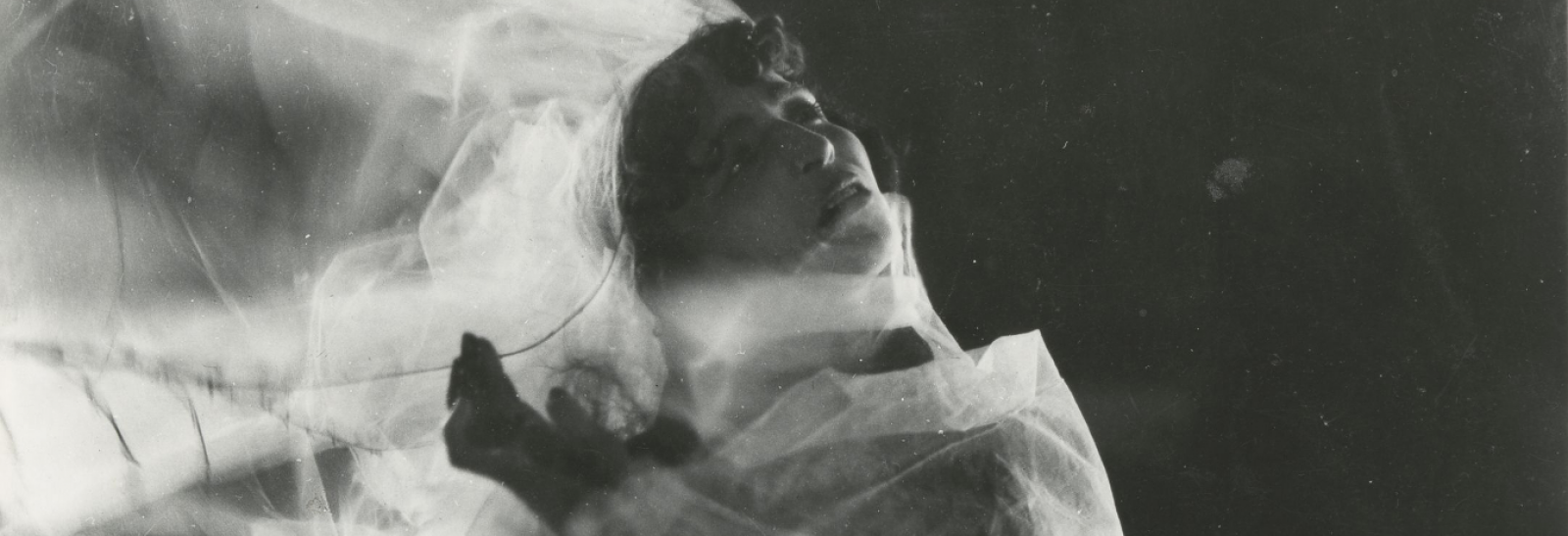
The Fall of the House of Usher (Jean Epstein, 1928, 66 min.)
It sounds like a dream project: two of the titans of surrealist film, Jean Epstein and Luis Bunuel, working together on an adaptation of Edgar Allan Poe’s famous novella. But Bunuel, who was serving as the assistant director, lost a battle of wills with Epstein, the two disagreeing over how much of Poe’s story to retain, and he left the project. Epstein’s vision keeps certain details, and certainly Poe’s mood, but eschews much of Poe’s plot in creating this surrealist masterpiece. Here, Roderick (Jean Debucourt) and Madeline (Marguerite Gance, Abel Gance’s wife) are husband and wife, not brother and sister, and Roderick is obsessed with painting Madeline, which seems to be having an adverse affect on her health. He’s summoned his friend Alan (Charles Lamy), who, in the first reel, encounters Nosferatu-like resistance from townspeople who refuse to drive him to the Usher house. In Poe’s story, the friend is the reader’s guide into Usher’s world, but once Alan strays from the familiar frame of reference provided by these superstitious villagers, he becomes useless as a guide, as he’s almost immediately swept up in the film’s hallucinatory nightmare. It starts with his first glimpse of the House of Usher.
The House is a masterpiece of set design, its cavernous expanses populated by sparse furniture, cinderblock pillars draped in billowing curtains, and random staircases that somehow fail to give an impression of exactly how big the place is; what interior layout we see doesn’t seem to fit the painted miniature, set against a pinhole-punched backdrop, we’ve seen on the visitor’s approach. The center of the house is the large canvas on which Roderick paints his wife’s portrait, and she often appears dozens of yards away, in another part of the room, as he paints.
It sounds a little trite to say that nothing here is as it seems, and it’s probably incorrect anyway: in this nightmare world, everything is exactly as it seems; it might change into something unexpected, but then it will be exactly as it seems in its new state. I guess that’s what surrealism is about. Take the painting, the focus of Roderick’s obsession—because it’s where his attention is constantly drawn, not to Madeline. We’re told that the Usher men are obsessed with painting their wives, but never that they’re obsessed with their wives. There’s an important difference: The art is the thing, the act of painting here, but on a larger level perhaps it encompasses the filmmaker’s need to make films. Anyway, sometimes that painting is a canvas on which Roderick paints, but sometimes it’s Marguerite Gance sitting inside a frame, making no real effort to sit still or refrain from blinking. This is no accident, of course: Roderick’s painting is capturing her soul, and at times, there’s more Madeline inside the frame than there is across the room, sitting for her portrait. Well, not that she sits there and takes it calmly: we see the effect of each brush stroke, some of them hitting her like lashes from a whip, some of them visibly draining her strength, culminating in an agonizing sequence of double, triple, and quadruple exposures of her death throes. “It’s there that she lives,” Roderick says, pointing at the canvas, and this, too, has different meanings: a present tense, because he’s so oblivious of her in reality that he can’t see anything but the painting, but also a grim future, as he’s consigning her to death for his art.
That death is only one of the film’s frightening, disorienting setpieces, and is only the introduction to the relentless horrors of the last half of the film. Everything about the film is designed to unsettle. Epstein uses extreme closeups of parts of faces—often the top of Roderick’s head—as action unfolds in the background, and this throws us: where are we supposed to look? It’s so odd as to seem like a point of view shot, but whose point of view is it, except for ours? It’s like Epstein is dragging us into the frame, demanding that we not separate ourselves from what we’re seeing. The film denies us the safe distance between viewer and viewed, and it does this so effectively that its horrors are occurring all around us. I shook with fear, shrank back into my seat, and generally thrashed my way through the nightmare into the eventual waking that comes at the end—an ending that left me feeling a bit let down, because surely, after such horrors, the only acceptable end to Roderick’s sad tale is death or continued terror.
If there’s a single, immediate emotional reaction that La Chute de la maison Usher prompts in viewers—aside from paralyzing terror—it’s an aching need to see more work by this brilliant filmmaker.

